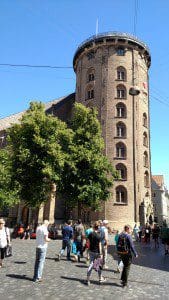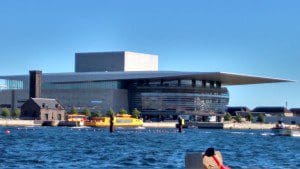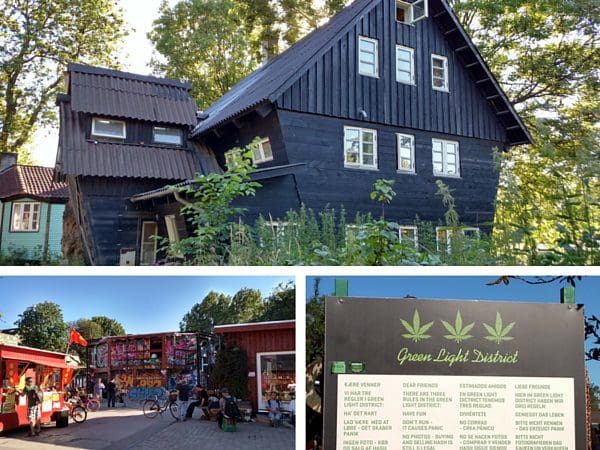 Copenhagen, Denmark is an old Baltic fishing village, founded in the 11th century that became a thriving trade center, the permanent home to the oldest continuous monarchy in Europe and by 1849, the capital of Denmark. It’s a progressive and socially tolerant city that manages to run efficiently, yet with a relaxed, down to earth feel. Copenhagen is a compact city filled with architectural treasures, picturesque canals and more Michelin-starred restaurants than any other city in Scandinavia.
Copenhagen, Denmark is an old Baltic fishing village, founded in the 11th century that became a thriving trade center, the permanent home to the oldest continuous monarchy in Europe and by 1849, the capital of Denmark. It’s a progressive and socially tolerant city that manages to run efficiently, yet with a relaxed, down to earth feel. Copenhagen is a compact city filled with architectural treasures, picturesque canals and more Michelin-starred restaurants than any other city in Scandinavia.
Copenhagen’s Standard of Living
For insight into the Copenhagen lifestyle, you have to grasp the national philosophy in Denmark called hygge (pronounced HOO-ga). Although the word doesn’t have a direct translation, the concept is something like “coziness” or maybe “the good life.” It’s the Danish practice of enjoying good things, be it the company you keep, the elegantly modern lines of Danish design or the warm glow of candles. Danes are repeatedly named the “Happiest People in the World” and one could make an argument that hygge is either the cause or the effect of that title.
Travel Maestro tip: Although Copenhagen is a happy, laid back place, be forewarned that it also consistently ranks as one of the world’s most expensive cities to visit.
What to See and Do in Copenhagen
Copenhagen is a very walkable city. From the Wonderful Copenhagen tourist office, almost every main sight of the city is within a 20-minute walk. Visit the redbrick Radhaus (Town Hall) and its square, then stroll the Stroget (pronounced STROY-et), which is a pedestrian shopping street with many restaurants and interesting sights along the way. Stroget ends on Kongens Nytorv (King’s New Square), where the ancient harbor of Nyhavn, directly ahead, is a must-see. This is also where the canal tours begin.

Tivoli Gardens, the grande dame of amusement parks, sits right in the middle of downtown. It’s captivating for adults and children with amusement rides, splendid gardens with flowers and exceptional lights, a feast of restaurants and an international concert series. Travel Maestro tip: You have to pay admission even if you dine at one of its restaurants, but a stroll through the gardens after dark among 110,000 twinkling lights is joyfully enchanting.

For an impressive panoramic view of the city, climb the huge spiral ramp to the top of the 17th century Rundetaam (Round Tower). It’s the oldest European observatory still in use. Concerts and art exhibitions are held at the tower throughout the year.
Another historic site that is a major attraction is the Amalienborg Square, one of the most beautiful in Europe. The square is flanked by four identical rococo palaces that have been home to the royal family since 1794. When the royal family is in residence (winter), you can see the spectacle of 70 guards wearing high, fur-clad helmets march in a changing of the guard at noon each day.

Copenhagen’s opera house, Operaen, is a dramatic modern building on the harbor across from Amalienborg Palace. Guided tours are available to go backstage June through September. Also on the harbor – a longer but pleasant walk from Nyhavn – is the Little Mermaid, the diminutive statue inspired by Hans Christian Andersen’s famous tale.

Christiansborg Palace, one of the most important buildings in Denmark, houses the Danish Parliament. A visitor’s gallery is open to the public for free when Parliament is in session. Tours visit ornate reception rooms used by the queen and the subterranean ruins of the 12th-century castle below the palace.
Another sight that is unique to Copenhagen and definitely bears a mention is the self-proclaimed autonomous neighborhood of Christiania where a bohemian lifestyle reigns on an unused military base. Walk down Pusher Street where marijuana is freely bought and sold, then wander along the scenic lakeside paths dotted with funky architecture, colorful bars and music venues, and even a schoolhouse. Travel Maestro tip: Pot commerce might be open and accepted, but put your camera away when walking down Pusher Street.

For a list of more attractions to see in Copenhagen from parks to free museum entrances, read the Condé Nast Traveler article 10 free things to do in Copenhagen.
Copenhagen’s Weather
If there is any down side to visiting Copenhagen it’s that the weather is unpredictable at best. From December to February is cold and dark with temperatures hovering around freezing and only four hours of sunlight per day. June to August is the most popular time to visit Copenhagen because daytime temperatures reach the lower 60s (F) and the days last a long 13 hours. Travel Maestro tip: Pack a raincoat, as rain can be expected year round, with the most in the summer months.
Copenhagen is a clean, cosmopolitan and environmentally friendly city. It has many excellent restaurants and is family friendly, so do take the kids. To include Copenhagen in your northern European vacation, talk to one of the Covington vacation specialists today.
You may also enjoy other Scandinavian posts by Travel Maestro:
Three Castles on the Island of Funen, Denmark
What You Don’t Know About Surprising Iceland
ICEHOTEL – Haute Couture on the Rocks






Leave a Reply